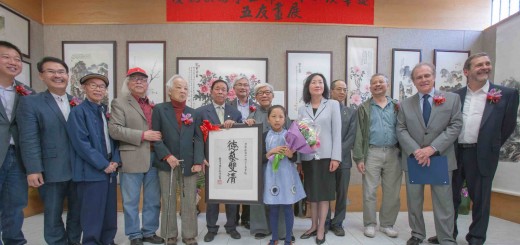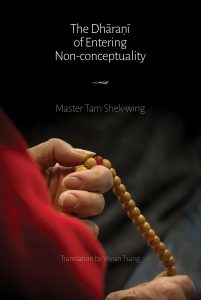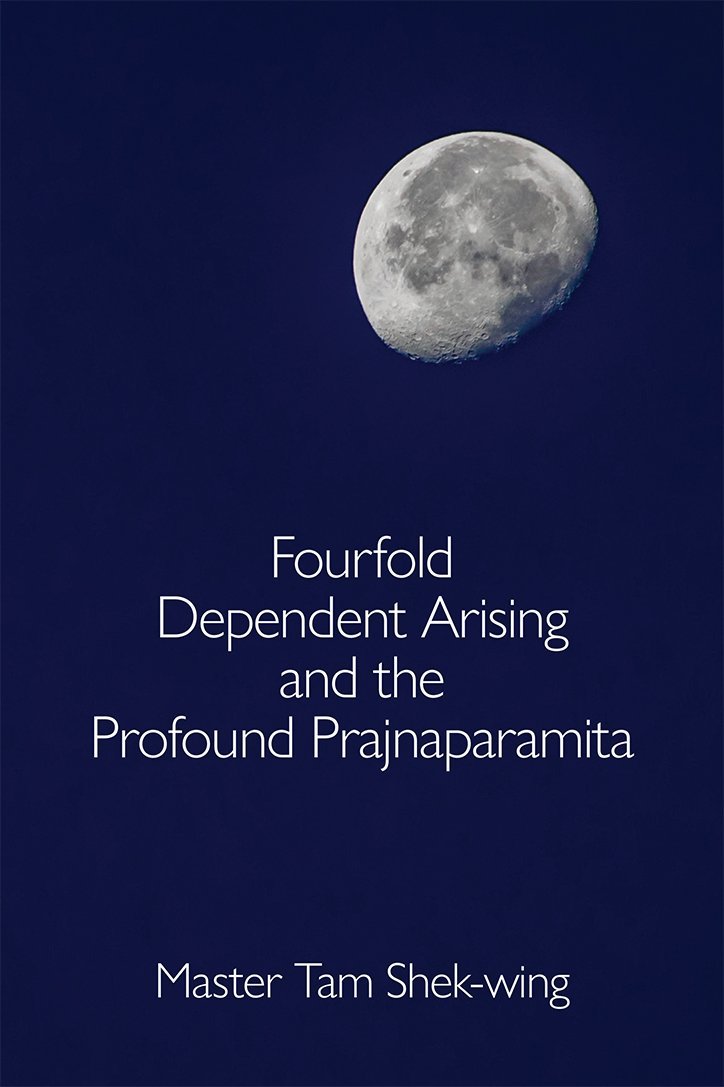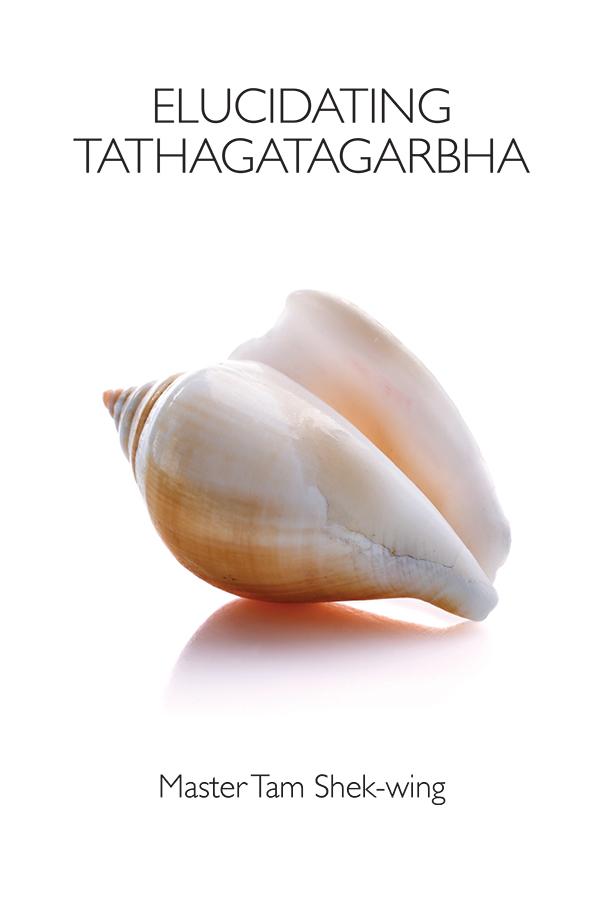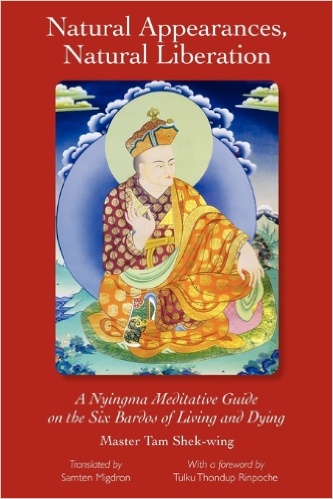Two Darks, One Black, Three Origins: Thoughts on Objectification, Charity, and Tathagatagarbha
By Vivian Tsang
I have a brother of sorts. We are both students under the same teacher, thus making our bond a brotherhood of sorts. Together we ran meditation classes fifteen or so years. By we, he was mostly the teacher and I was a learner. And during this time, I would run errands and be a point of contact, occasionally tried my hands on running the class. But ultimately, at the most, I was just an apprentice.
During this whole time, I have a root teacher, but I learned equally as much from the brother, if not more. If I learned the tradition from the root teacher, then I would learn from the brother on how the tradition manifests itself in life. If I were to publish another book, I would for sure put both their names down. What comes out of me would be a culmination of the time spent with them.
Thus far, I have made it sound like I have been passed on a thing, which is in many ways an unfortunate outcome of the English language. I cannot help but be reminded by our current education system. By our, I don’t only mean “western,” but also the overall attitude towards what learning means. These days, it has become increasingly transactional. When a student goes to school, in spite of all the lip-service paid to the idea of “experiential learning,” it is ultimately seen as a receiving of service.
Instead of launching a rant, I would like to recount a recent experience in hopes of a better illustration.
A Conflict in the Family
Recently I had a big fight with... Recently I had a big fight with my stepdaughter over my stepson coming to visit us for a week. My stepson brought his girlfriend and wanted to show her the city and to tell her what his childhood was like. To us parents, we were more than happy for a child to come home for a visit. Our stepdaughter had just recently moved out and her room naturally became a guest room, which became the source of conflict. At one point of the fight, she said to me, “Well he promised my mom that he would stay at his friend’s place when he comes visit. He could’ve made good on his words.” I’m not here to vilify my stepdaughter or my family. I do understand from a child’s perspective. I was, and still is, one myself. The fight was in part about whether there exists favoritism on the part of the parents. What I find particularly interesting is how space and time are carved out arbitrarily as objects to be owned and by whom. Here, the “object” in question was a bedroom, which was uninhabited. Or a bed, which has become unslept. As a child, if I had been away, I would have liked to be able to come home. Thus far, I have painted a picture of a conflict, where views cannot co-exist. I almost couldn’t help but make this a complaint of capitalism, but this is not merely about capitalism. Money, or whatever unit of measurement is a convenient way of establishing common ground. Problems arise when the common ground is strictly about carving up space and time as areas of ownership. The moment things can be carved up, it quickly devolves into a zero-sum game. We forget that sometimes, the sum is more than its parts. Other times, though, and more often than not these days, the sum has become far less than its parts. This is in part why I haven’t been writing much lately. Because one could easily devolve into a form of reasoning. One can always justify anything through reasoning. The question has become, what good is reasoning? My father-in-law was an expert on... My father-in-law was an expert on Lev Shestov, a Russian religious existentialist. While he has worked on Shestov as early as the 1960s, his book on Lev Shestov was not published until 1991 posthumously. In my opinion, it was definitely missing chapters. If I understood my father-in-law’s work on bioethics and scientism towards the end of his career, I felt that he had not quite articulated Shestov’s position against rationalism. The point is that reason (nor technological advancement) are not truly the salvation human needs. I was a little heartbroken from the conversation with my stepdaughter, not because she hurt my feelings – her point-of-view was valid to a certain extent. It was a form of reasoning. As parents, we have our form of reasoning. But when one put all the reasons together, there is not a coherent image that emerges. Here, instead of devolving to an argument on morals and ethics, east or west, I would like to illustrate by way of photography. My husband belongs to two FB photography groups in the local neighbourhood. Clearly the groups cater to the local community and much less on photography. This does not stop photographers wanting to compete on their best shots of the neighbourhood. The photographers often rise early to captures purportedly unseen. I say “purportedly” because there are always the key landmarks that people go to. Today, one photographer “complained” to my husband that so-and-so stole his shot again, as in this so-and-so managed to post ahead of others. This is of course a joke, all photographers know this. The scenes are there, irrespective of the audience. Nobody owns a photograph. It is up to one to raise the camera and press the button. Now I’m again circling back to the brother. Here, I cannot help but be reminded of one of the last gatherings during covid. The brother had wanted to present something new, built upon the practice up until covid began. But over time, upon seeing the students’ expression, the brother began accommodating the students, and eventually, dumbing down the content to reiterate what was taught before. I was quite saddened by the scene because some mustered the courage to come after a year of absence because of covid. Towards the end, the students couldn’t wait to leave. The Chinese expression of chicken bones comes to mind: 食之無味 棄之可惜. Tasteless, but seems like a waste to discard. I can be pessimistic sometimes. Once shortly after I posted on Facebook complaining of reasoning as an obstruction to truth, the brother forwarded a short video clip. As I learned later, the clip was a discussion between a few scientists and intellectuals in China on innovation. The clip was a three-minute clip where the scientist talks about “the two darks, one black, and three origins.” According to him, the essence of the scientific pursue was exactly that. The two darks are dark energy and dark matter, where there is a specific meaning in physics, and there’s a more general meaning to refer to there are many hidden things that are beyond the human senses and perspectives. The one black of course refers to the black hole – his point was that the black hole is a phenomenon where what we consider as rules or as the universal, completely fall apart at the point of singularity. Well, then, are these rules truly universal? Finally, the three origins refer to the origin of the universe, the origin of life, and finally the origin of consciousness. According to the scientist, the most difficult is the origin of consciousness, for without it, the two darks, one black, and the two origins cease to make sense. What is remarkable about... What is remarkable about the clip was not about demonstrating scientific supremacy but the opposite, that the pursue of science, or truth, or innovation, has become an act of humility and openness, for if a truth is forever a truth, what new discovery can be made possible? The clip ended with him suggesting that innovations often came in the humble hands of crafts people. This is of course the Buddha’s teaching of Tathagatagarbha, which encompasses the teaching, the practice, and the actualization. Looking back, Tathagatagarbha is often translated as Buddha nature, and sometimes the Buddha womb. These days, I have opted to call it Buddha-within to mean that it is always there, kind of like in the photography sense above. But if it is merely a case of existence, it only sits there, thereby missing the craftsmanship aspect. Actualization does not only mean “I work hard at something so I deserve it.” Actualization sometimes comes in the form of an apprenticeship such that something new breaks through. Classes run on the appreciation of the arts tend to marvel at the specific composition of an artwork… either one marvels at the exceptionality of the artwork or the genius of the artist. I didn’t say that the artist wasn’t important, nor would I say the artistic process doesn’t matter. But this is also why “garbha” in Tathagatagarbha also means “hidden.” When one errs on either the subject side or the object side, this is also when the so-called Buddha-within is hidden from view. Once I read a scholarly work on Mipham Rinpoche, the author used the word “mystical.” The book was well-done and very scholarly, but in my opinion, the word “mystical” does the entire book, and by extension, Mipham’s work, a disservice. Having said that, I was sufficiently excited by the clip that I forwarded it to a few people. One ended digging up some gossip on Chinese social media on the speaker. It was just harmless gossip and yet, it is also such gossip that erodes the social fabric in the West. Some calls it “misinformation” and “disinformation.” I call it gossip. I was of course keen on the content in the video clip. But hoping others share my enthusiasm, I came away feeling that the video clip has become obscured, if not contaminated, by the gossip. Again, I am being negative here. This is often why emptiness, compassion, and vitality are presented as one, or at least as non-duality, by lineage masters since Buddha’s time. For this reason, I am optimistic. And I am grateful. Vivian Tsang is a student practicing under Master Tam Shek-Wing since 2006. Tam is a founder of Vajrayana Buddhist Association (VBA) with branches in Toronto, Vancouver, Canada and Hong Kong, China. She’s a translator of Tam’s work, including Fourfold Dependent Arising and The Dharani of Entering Non-conceptuality (both published by Sumeru Books). She is also one of many volunteers who help running dharma and meditation sessions at VBA.Reasoning as Objectification
The Buddha-Within as All-Embracing Compassion and Vitality
